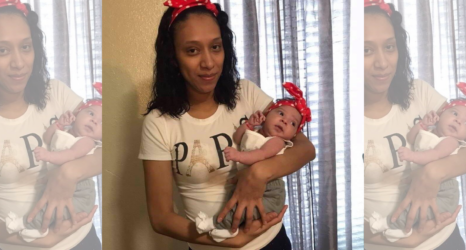In the late 1970s, Sally Ride spotted a newspaper ad from NASA calling for applicants to its space program.
She immediately knew that, as a young, intelligent woman about to receive her Ph.D in physics at Stanford University, this ad was for her. “I’m one of those people,” she thought.
People. Not men, which all American astronauts were at that time. That one word—people—would soon alter the course of space exploration and engineering for decades to come.
Ride, the first American woman—and the third woman internationally—to fly in space, died Monday at her home in San Diego after a 17-month battle with pancreatic cancer. She was only 61 years old. Her legacy, however, continues through Sally Ride Science, an organization she founded in 2001 to inspire and empower girls and young women to pursue their interests in science, technology, engineering and math (the “STEM” fields).
As President Obama put it in a statement released Monday: “She inspired generations of young girls to reach for the stars.”
At a time where women earned roughly 9,000 of the 72,000 engineering bachelor degrees (and only 483 physics degrees, Ride’s main area of study), Ride’s first space flight in 1983 was a landmark moment for the women’s movement. As a member of the five-person crew of the space shuttle Challenger, she was the first astronaut to maneuver a robotic arm–a device she helped engineer–in order to retrieve a satellite. She also was, and remains, the youngest astronaut to ever go into orbit.
Ride went up on a second mission in 1984, logging a total of 343 hours in space during her career. A third mission would have followed if it weren’t for the tragic explosion of Challenger in 1986, which killed the seven members on board, including two women–astronaut Judith Resnik and the first teacher in space, Christa McAuliffe. Ride later sat on the investigation boards for both the Challenger explosion and the 2003 Columbia space shuttle disaster.
Born and raised in the Los Angeles suburb of Encino, Ride seemed determined to smash as many glass ceilings as possible. A gifted tennis player throughout her youth, she initially set her sights on professional sport, and was nationally ranked in tennis by junior high school. Her call to science, however, was evident from a young age, and took root in high school when she was in the first chemistry class at the Westlake School, an all-girl academy at the time.
Ride told Ms. in the cover story (pictured above) of the January 1983 issue:
I don’t know if I just got there at the right time or if it was because a couple of us started pushing. But first a woman came from UCLA and taught an absolutely marvelous course in physiology. Then they hired a woman … to teach chemistry, physics, trigonometry and calculus. Those two were the science department, and they were great!
Ride permanently switched from tennis to science in college, transferring from Swarthmore to Stanford, from which she received a bachelor’s, master’s and doctorate. When she saw the fated NASA ad, Ride was finishing her thesis on x-ray astrophysics.
According to Ride, the men at NASA did not know how to take the idea of women entering the program. Space was, of course, a man’s frontier that women were expected to view from the ground. When six women, including Ride, entered the NASA program in 1978, the most exclusive “men’s club” in America was swiftly integrated. Women were now allowed to be engineers, mission specialists and pilots, and hold the esteemed, male-centric title of “adventurer”—forever changing the face of space flight.
Ride told Ms.:
I don’t think they quite knew what to make of us. … But the guys who entered with us were willing to see us prove ourselves and give us time to do that.
For the past 10 years, Ride gave girls that opportunity to prove themselves through her organization Sally Ride Science, based in San Diego. Its main focus is to break down gender stereotypes within STEM fields, which are still overwhelming dominated by men. Ride attributed this male domination to lack of resources and mentors for girls, and continued to work toward eliminating the STEM gender gap:
If girls are interested, they have the potential to go further. … There are still lingering stereotypes that affect girls in middle school, and they lose interest in the subjects.
Since America first saw Ride in her blue NASA jumpsuit, she has been the face of the “modern scientist”—an idol that more closely resembled girls and young women who were labeled “tomboys” or “brainy.” It seems like Ride enjoyed this sort of “tomboy heroism,” which let her to play off stereotypes while simultaneously debunk them.
And one more influential act has come with her passing: In the obituary released by Sally Ride Science, the astronaut/scientist/trailblazer officially came out as a lesbian through the simple phrase, “survived by her partner of 27 years, Tam O’Shaugnessy.” Ride’s sister Bear, a lesbian as well, confirmed the romantic relationship Tuesday—a relationship that was hidden from the public eye.
As Ride hoped she would change society’s perceptions of women in STEM, Bear hopes that her posthumous coming out will be a boost for LGBT youth. She told BuzzFeed, “I hope it makes is easier for kids growing up gay that they know that another one of their heroes was like them.”
Since Ride’s first space mission in 1983, 42 American women have flown with NASA, though they still compose only 26 percent of NASA’s astronaut corp as of 2008. We have a way to go in eliminating the STEM gender gap, but let’s not forget the woman who brought this gap to our attention and forced us to reexamine the way we envision a scientist, and hope we boost little girls who want to pursue the field.
Ride on, Sally Ride.
Photo of January 1983 Ms. magazine cover featuring Sally Ride.





